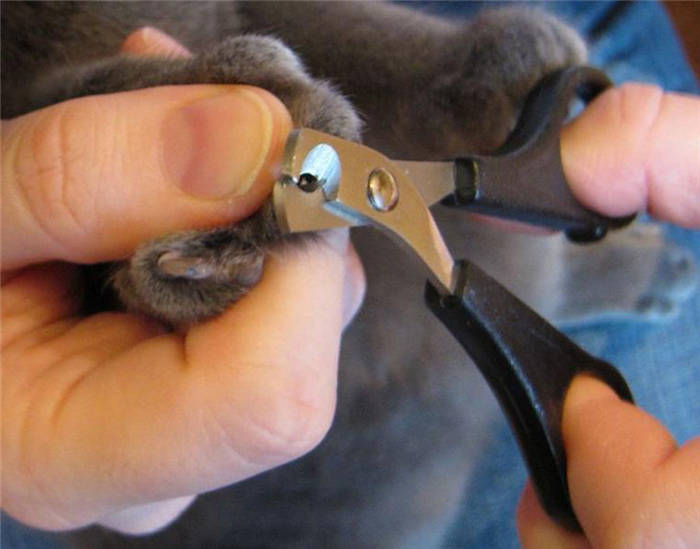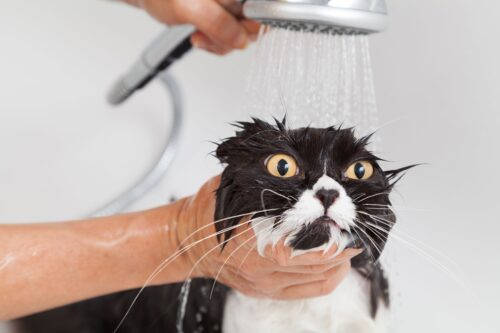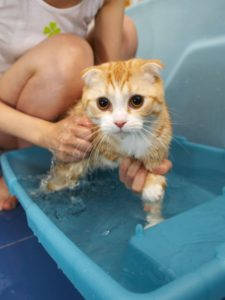5. Fifth. We do not soap the cat directly with soap or shampoo.

- How to wash a cat: quickly and with minimal stress for the pet. To do this, I stick to 10 simple rules😺🚿
- How to wash a cat if she is afraid of water and scratches. how
- How to prepare your pet for the procedure?
- Necessary tools and equipment
- How to choose a shampoo?
- How do I dry the cat?
- How do you bathe a cat if it is DIALLY afraid of water?
- How do you wash a cat?
- How do you bathe a cat if it's afraid of water? Preparing
- Preparation:
- The process of bathing itself. How it happens:
- What do not need to do to wash the cat?
- How to wash a cat correctly?
- Dry the cat's fur after bathing
- Video, how to wash a cat correctly.
How to wash a cat: quickly and with minimal stress for the pet. To do this, I stick to 10 simple rules😺🚿
A while back I posted a video of me washing my cat on my channel. The fact that she stands still while doing so surprised many people.
Some suggested that I had pre-dosed her with something sedative, that I had a perfectly quiet and angelic cat, etc.
People have shared stories under my posts about bathing cats (I also had an article) about how their cats perceive washing.
In most cases, cats are adamant about such procedures.
But meanwhile, sometimes bathing is necessary for the sake of preserving the health and saving the cat's own life (I wrote about it, I'll give you a link at the end).
I will tell you how we do the bathing procedure, so that the cat is relatively calm, although she is the biggest coward and the most cautious cat among our three cats.
We completely misbehaved our time with our older cat, Porsche, when we tried to bathe him when he was young without proper training.
He somehow thought we wanted to drown him🙈
Screamed, scratched, "didn't communicate" with us for probably 3 days afterwards!
And the most outrageous thing is that ever since then, if you leave the bathroom door open, he's sure to make a pile in the bathroom 😣
And he still gets very Worried when we're in the shower (video).
So with Marcy, we behaved completely differently. We studied the topic, prepared the ground and only then did we redeem for the first time.
So, the first obligatory rule of bathing success is preparation.
We started the preparation when we noticed that Marcy likes to walk outside and most likely, on some occasions, her bathing will not be avoided.
✔ At first we put her paws 1-2 cm in warm water a couple of times. At the same time, while she was standing in the water, we scratched her up and down. Made her feel so good that it outweighed the discomfort of wet paws.
How to wash a cat if she is afraid of water and scratches. how
You should wash your cat in water close to his body temperature. The main thing is not to get water in his ears. You have to get her used to not being afraid. You have to get her used to the bathroom every day and wet her with warm water, and then give her a piece of sausage, then she will get used to it and when you bring her into the bathroom she will not be afraid, because she will know that they will give her a treat after.
How, how… Tighten up and get under the shower, the main thing is not to wet the ears and eyes, soothe the words, take a helper to hold a towel and wrap after treatment. And, of course, no draughts.
You can't wash cats, washing them will only ruin their skin – you'll wash away the protective layer from the skin and ruin the cat's coat. Not to mention stress and colds.
Cats should only be washed when absolutely necessary. If it's not dirty, don't wash it at all.
If it's dirty in places, wipe off the dirt with a damp cloth.
If you start to bathe, don't panic yourself: do it with confidence and as quickly as possible. Have everything you need on hand. Have towels ready in advance. Put something warm under the radiator to keep the cat warm after bathing. Don't allow drafts.
I used to put three basins of water in the bathtub beforehand: I would wash in one and rinse in the others. My cats stood with their front paws on the curb and their backs in the basin, so I was able to use the shower.
But bathing was stressful for them. And I was afraid they might catch a cold.
You can't do it alone, in this condition the cat sees a danger to itself and tries to defend itself, i.e. it will tear and bite, it will be necessary to hold both forelegs and hindlegs, so it's easier and more effective to perform the bathing procedure together. Good luck! (And some people really like to bathe!)
In a tall basin. Hold by the front paws, muzzle on the edge of the basin – so she won't be too scared.
If you don't have to wash it, you don't have to at all.
How to prepare your pet for the procedure?
Before washing, it is advisable to feed the pet in advance – 2-3 hours before the procedure. It is also desirable to trim the claws of the pet, so that it cannot scratch your skin. The pet's hair should be combed, and existing tangles should be untangled or cut off.
From the bathroom you should remove all objects that the cat might accidentally knock over or break. Fill the bathtub with a small amount of water and put a rubber mat or a towel on its bottom. This will keep the pet from slipping and allow it to feel more confident. Shampoo, a large towel and a ladle for watering should be at hand.
If you are going to bathe the cat for the first time, try to have two people do the washing procedure. Let one person hold the cat firmly so that it cannot slip out of the tub, while the other person washes it. Don't forget to set a comfortable water temperature beforehand – about 35-40°. In no case can you wash the cat in cold or hot water. The shower is also better not to use.

Necessary tools and equipment
Detergents must be special, adapted to the cat's skin. No classic shampoo or soap should be used! Every cat loves to lick itself after bathing, and an ordinary detergent can be toxic for it. Shampoos for humans contain fragrances, which can cause severe allergies in the pet.
Long-haired cats may need a conditioner. For cats of beige, white or peach color it is recommended to use special shampoo for light-colored hair. There is no need to save on specialized cosmetics – shampoos and conditioners for pets use up a little bit, but it protects the health of the pet.
How to choose a shampoo?
You should shampoo your pet only with products that are specially intended for it. Human shampoo or soap is not suitable, because cats have a different acid-alkaline balance of the skin.
What should I bathe my cat with? Liquid shampoos are considered traditional and are always available at any pet store. They foam well, quickly penetrate into the coat and are easy to rinse off. There are several types of these shampoos:
Dry shampoos are a powder. They are ideal for those cats who do not let themselves be washed, scratch and bite at the sight of water. Dry shampoo should be applied to the pre-scrubbed coat. The powder is rubbed in and then combed out. The powder absorbs grease and dirt, and then it is easily combed out. This shampoo can be used about once a month .
Shampoo spray resembles the previous version in the type of action. It should be sprayed on the hair of the cat, and then dried. Then the shampoo is combed out. You need to make sure that the animal does not start to lick itself.
What to wash the cat at home, if there is no shampoo? In a pinch you can use children's toilet soap. It has about the same pH as your cat's skin, so it won't hurt if you use it once.
How do I dry the cat?
Immediately after washing, the cat should be wrapped in a dry towel. You can use several towels in turn, until the cat's coat gives up most of the moisture. Next, you need to dry them with a hair dryer. Long-haired cats are recommended to be combed out with a brush. Then move the cat to a warm, quiet place and let it calm down.
There are many different opinions about this, scientists have not yet come to one answer. But there are three most plausible reasons:
- The animal's fur gets wet and becomes heavy. This causes the cat to turn from a skilled hunter to an easy prey, something that its instincts constantly remind it of.
- When wet, the coat becomes cold and no longer keeps the animal warm. The cat freezes, which she does not like.
- If a cat has had a bad experience with water, it will remember it for life.
How do you bathe a cat if it is DIALLY afraid of water?
We tried to wash the cat. The breeder, from whom we took this 4-men carcass (cat breed Maine Coon, they seem to like water, but as it turned out …) , assured me that the water this little animal likes. I already had a cat who liked water. I filled a basin with warm water, put it in the bathroom. The cat went in there, too, in the bathtub. I let the cat walk around and smell the water, and I think I can take a chance. I put the cat in the warm water, and he started to get out of there, scratching. Okay. Tried and just dragged the water in my hands, watering the cat, soothingly stroking. talking to him – hisses, releases claws, scratching, yelling. Attempt number three: I grabbed him by the scruff of the neck, turned on a quiet, almost silent shower, called my mom to help hold him. Started watering, so the cat immediately broke free, scratching us, scratching the door. Bottom line: we are wet, the cat is wet, but not washed, the whole apartment in the water.
I'm afraid he won't let his claws clipped, so . Can you advise me, kind people, what to do? The cat definitely needs to be washed, but how?!
Washing machines and other animal cruelty are not acceptable. Please give advice that might ACTUALLY work!
1, "wash" with talcum powder and dry shampoo … .
2, put a chair with a backrest in the bathtub. Hang up a towel. The cat sits on the chair, clutching the towel. It's calmer that way.
3, there are special "nets". You put the cat in such a net-bag. You fasten it on the neck. You cannot wiggle your paws. That's how you wash it.
Get used to clipping claws MUST. You're coddling and coddling the kitten. Coons instantly figure out who to obey and who to bat an eye at.
Do not forget that many cats are afraid of the noise of water from the faucet or shower much more than just water itself.
I put mine in a dry bath. And quietly poured a bucket of water from the previously prepared bucket. The temperature measured by itself to neither cold or hot. Neutral in general.
From the first dousing wash with shampoo, I did not get just poured the cat. Drying him in a towel, but he got out of it right away. Although the basic moisture is collected. Next went into a dusty corner and licked himself.
The third time was relatively still and managed to shampoo.
I think the hair dryer will also be a lot of scares.
The main thing in the ears do not pour. And in general on the head.
How do you wash a cat?
If among dogs there are many breeds that are not only not afraid of water, but love it, then in cats it is very rare. Most often they have a panic fear of bathing and in every way express dissatisfaction with this process. So the question arises: How do you bathe a cat if it is afraid of water?
Of course, a cat should be bathed much less often than a dog. Healthy domestic cats often lick themselves, so you should wash them only after a walk in case of heavy soiling, as well as before pet shows. Bathing a cat every day just to shampoo its fur smelling good is very unhealthy: it weakens the protective function of the skin.
How do you bathe a cat if it's afraid of water? Preparing
- Start accustoming your cat to washing when she's still a kitten. Wipe its coat as it gets dirty with a damp cloth, accustom it to water gradually. Kittens younger than two months should not be bathed unless absolutely necessary.
- Trim your pet's claws a few days before bathing. Without sharp claws, bathing will be less traumatic for the owner.
- Comb the cat's hair frequently, so that it won't tangle too much after bathing.
- Under no circumstances should you drag your pet into the bath or switch on the water suddenly. This is almost 100 percent traumatic for the cat. Start with toys in the bath that the cat can only play with there. You can put a piece of food on the tub to lure the cat in. The water should be turned on gradually and never poured over the muzzle and ears.
- Prepare everything you need for the bath beforehand. The animal should not be stressed along with the owner, who is looking for a clean towel, flicking the shampoo caps and checking the water temperature right on the cat. You need to hang a dry towel in advance, put a mat on the bathroom floor so the cat won't slip. It is worth to close the door to the bathroom, remove all objects in which the animal can bump into if it thinks of escaping.
- If it is possible to bathe the cat together, one person should pet and gently hold the animal, and the other person should wash it. But don't turn bathing into a torture for the cat. If it is urgent to bathe and it is panicking, it is better to give it dry shampoo than to hold it by force. Try to get your cat used to bathing gradually.
- Make sure that before you bathe your cat feed it, play with it and make sure that it uses up as much energy as possible and that it doesn't run in the bathtub.
- If the pet is afraid of running water, fill the tub in advance (no more than to the cat's belly) or start accustoming it to water by bathing it in a basin or sink. There are also special faucet attachments that allow you to bathe the cat in the most gentle way possible.
- Protect yourself. Cats often scratch their owners while bathing, so wear comfortable clothing and protect your hands with gloves if you have serious concerns.
Preparation:
I prepare everything I need to wash in advance. I prepare a large dry towel, a diaper or two, open the shampoo, lay a dry cloth on the floor, close the bathroom door and remove objects that a fleeing cat might cling to (what if!).
I mostly wash the cat alone, but two would be better, because one strokes and holds the cat and the other washes.
Preferably, the cat should be full before bathing. Then she will be kinder and more malleable.
I pour warm water into the bath in advance (kitties up to their tummy). You can, of course, start with bathing in a basin. You have to accustom the cat to bathe gradually. At first you can just wash with warm water without shampoo. But I honestly admit that I started bathing immediately with shampoo. I buy special shampoos at a pet store.
The process of bathing itself. How it happens:
I wash my cats this way: I carefully put the cat in warm water, which reaches the belly, then I start to slightly wet him with water, while holding him firmly by the withers. I squeeze the shampoo on his back, rub it into his fur and gently turn on the shower, gently directing it to the back of the cat, and trying to rinse his head with my hand.
I make sure that the shampoo does not get into the cat's eyes and ears. I wash out the shampoo very carefully: cats lick themselves, that's why it is especially important not to leave any shampoo on the cat's fur.
To protect themselves, wear a jacket with sleeves (which is not sorry), and you can gloves (but I do not wear). During bathing I ask my cat to bear with me, but I hold him by the withers with a dead grip. I always take off the collar beforehand.
Teddy may walk on the steep wall of the bathroom during the bath, but under my control)) I usually put him down and ask him to be patient. I am a strong spirit, so I endure the whole bathing process, the whole bath and shower ceremony. I myself am usually wet from both water and sweat.
I can tell you that not all cat owners can do it. I know owners who can't even put the collar on themselves, let alone bathe – we can't do it. No, I can do it! I always set myself up in advance for this "feat" and do it.
What do not need to do to wash the cat?
- No need to turn the faucet on full blast and put the cat into the bathtub while the water is rumbling there.
- And you don't have to turn the shower on full blast and aim it at the cat.
- You should not use dog shampoo to wash your cat, and certainly not dishwashing detergent.
- You should not pour shampoo from the bottle directly on the hair, especially dry hair.
- You don't need to put absorbent cotton in his ears, it will only irritate him.
- No sedatives should be given, they do more harm than good.
It is desirable that you have a helper, four hands are much better than two! Then one of you can fix the animal and the other can do the washing.
Disarm the cat in advance by clipping its claws. This will do you good if he is afraid of water. The cat will try to climb all over you to escape the unpleasant bathing routine. Trimmed claws will cause less injury.
A special mesh bag, which is on sale in pet stores and costs about 1300 rubles, will help to bathe the hysterical cat. Actually, it's not even a bag, but a mesh bag made of durable polyester with a lock on the neck. A cat placed in it can't scratch you or jump out of the bathtub, besides, limited in its movement, it behaves more calmly and you have your left hand free. If you don't have a helper and a bag, all you have to do, i.e. pour water out of the bucket, add shampoo, rinse and rinse the coat and operate the shower, you will have to use your right hand.

On the bottom of the bathtub, lay a soft mat that will fit tightly on the surface. Prepare two plastic buckets of warm water and dissolve specialized shampoo in each of them. You will need 50-100 ml of concentrated shampoo per bucket of water. The basins in our case will not work, and the buckets should be wide and deep enough. Rectangular pails with a volume of 10-15 liters are not round, but convenient.
How to wash a cat correctly?

Take the cat in your arms. Fix its hind paws with your right hand while supporting its body from below, and fix its front paws with your left hand, supporting it with your palm under its chest. Calmly start lowering the cat into the bucket of water. The cat should sink completely into the water and rest its hind paws on the bottom. Cats usually take the plunge calmly.
Now you can let go of the back paws and start washing the cat as if you were washing a wool sweater. Remember that your left hand is constantly securing the front paws and holding the animal so that it is immersed up to its neck in water. Use your hand to lightly massage the animal's coat so that the solution soaks it all over the body, especially where it is thick. This process will take you an average of five minutes. I don't recommend washing the hair of a cat who is afraid of water. It usually doesn't get very dirty.
After you have finished "washing" in the first bucket, carefully move the cat to the second bucket and continue "washing" in fresh water. If the cat is still afraid of the water, don't loosen control and talk to him calmly.
While the cat is soaking in the second bucket, carefully pour dirty water out of the first bucket and lower the shower into it. Let the water run in there to rinse out the coat.
Dry the cat's fur after bathing

Cover the cat with a towel or sheet. You should have plenty of them at hand, and they should absorb the moisture well. I use old sheets: they are thin, soft, gentle and hygroscopic. Soak the coat, not rub it with massaging motions.
Change the towel as soon as it gets wet. After the cloth stops absorbing water, move on to drying with a hair dryer. This procedure also has its secrets, but I will tell you about that next time. After the cat is dried, have a cup of tea. You definitely deserve a rest, as washing cats and cats is quite a stressful procedure both mentally and physically.
Video, how to wash a cat correctly.
And lastly… There are a lot of videos on the web about "how we wash the cat Kuzya, and he yells", "wash the cat with the five of us", etc. Such home videos are more likely to intimidate those who first encounter the need for "cat-washing" than to help. There are others, with cats blissfully floating in the tub and kittens napping from the warm water. Ideal, which is also not something to be guided by.
Tune in for something in between, and to be sure, we suggest watching a couple of owner-directed videos of how to bathe a cat. In one of them, the cat is washed in a sink, and in the other, in a bucket. Unfortunately, the washing procedure there is not performed perfectly, we advise you to take into account our recommendations written above, but still you will see how the cats behave during the wash and the basic actions of the owner.






